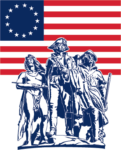virtual tours
The FTBPC Team has been working to develop virtual tours to provide visitors with expanded information and historical context about this critical battle that shaped our nation.
These tours will be updated regularly as we uncover more artifacts and personal stories to share.
Click the links below to view the tours.
